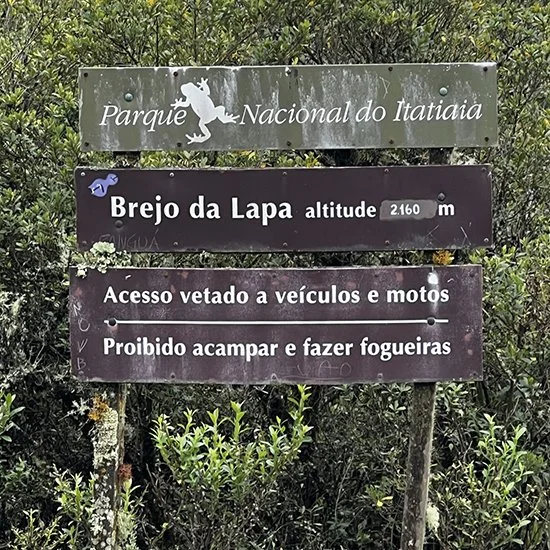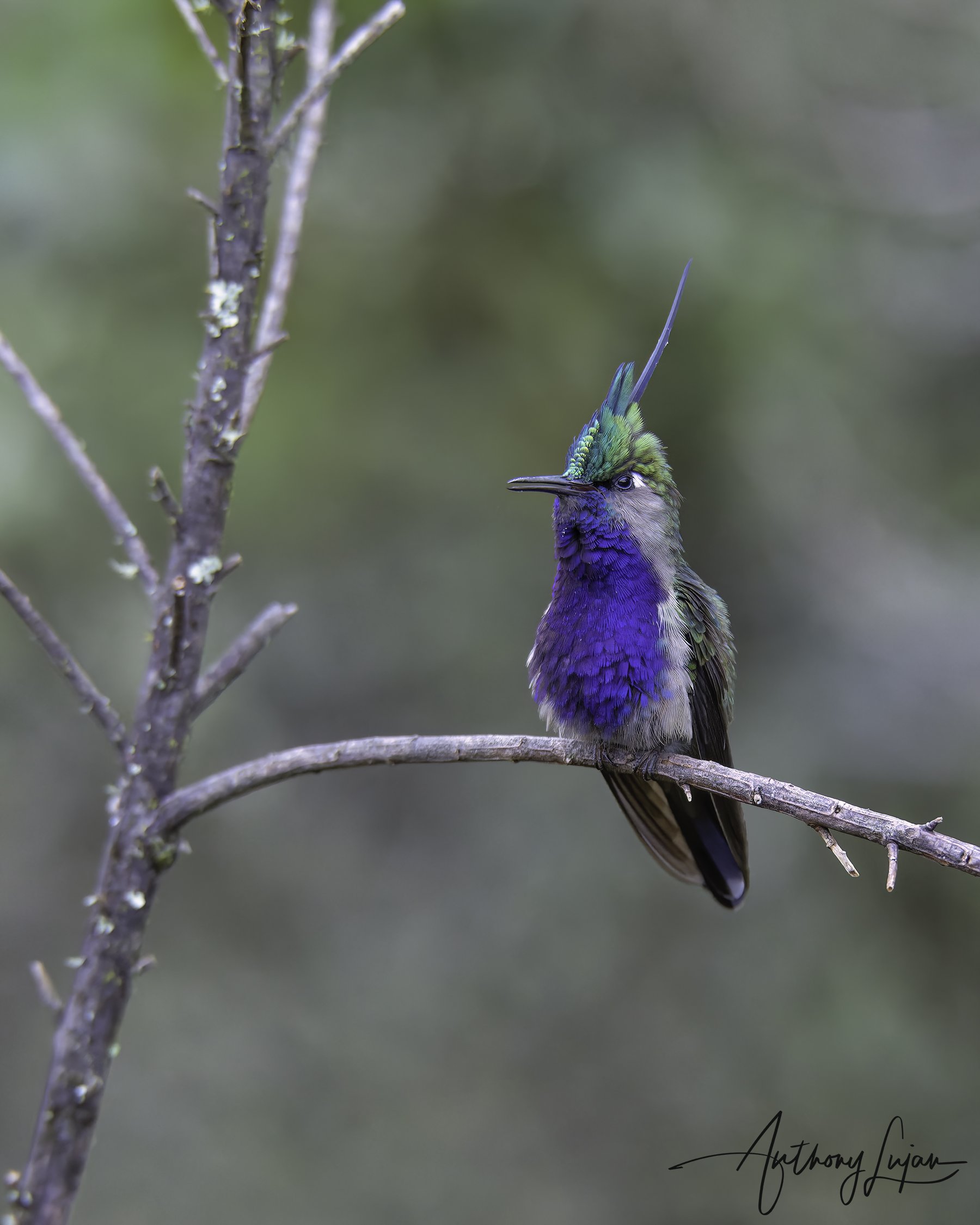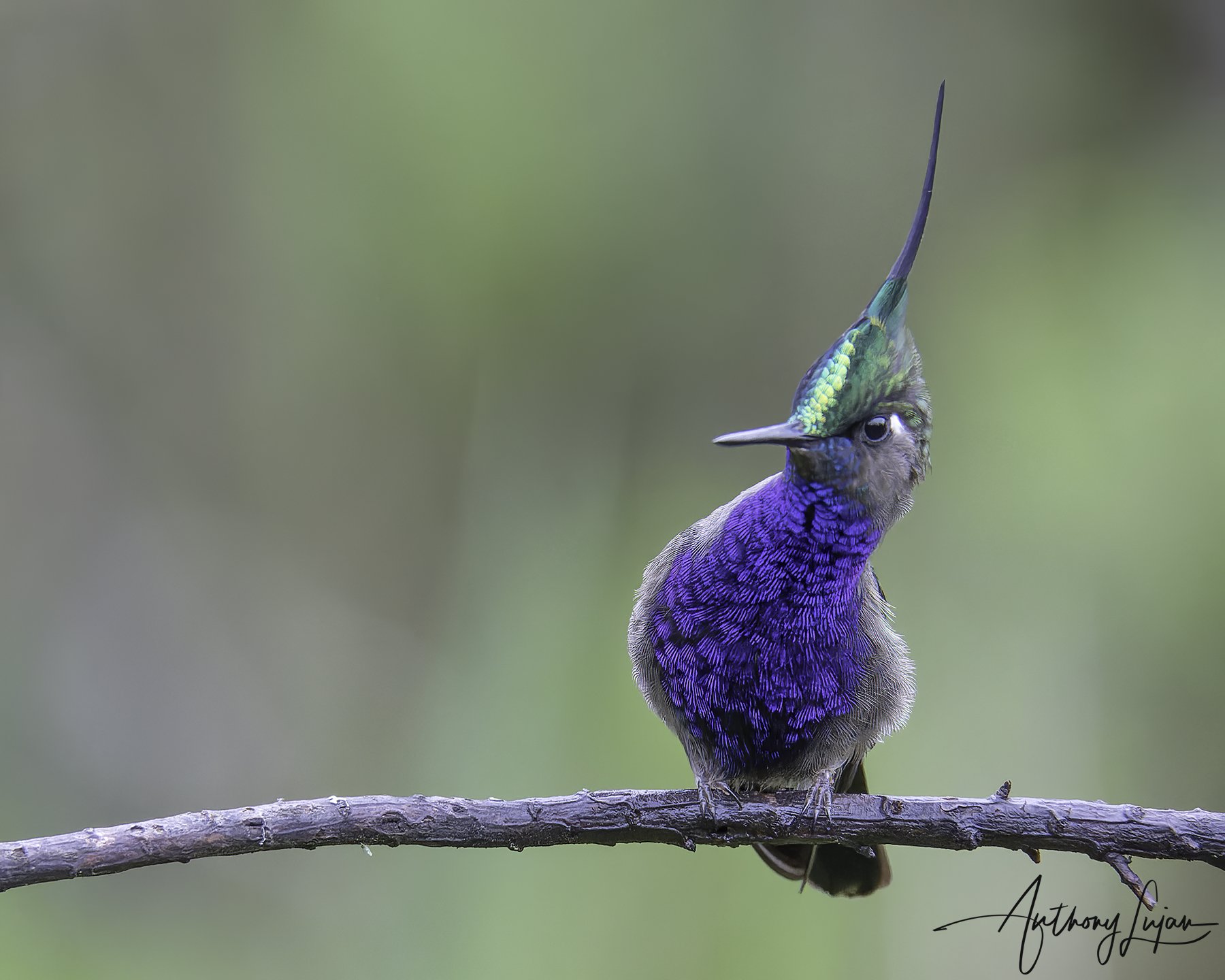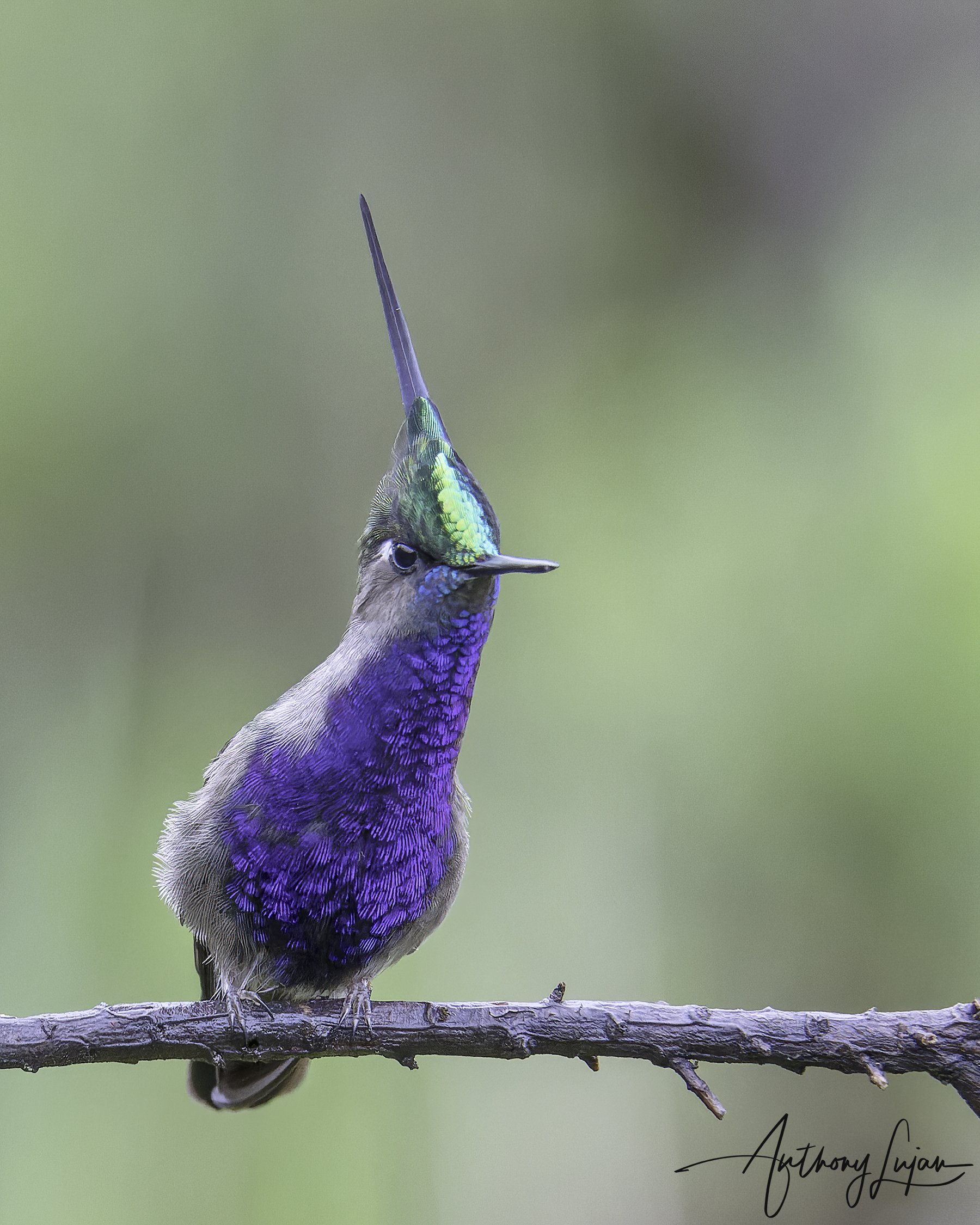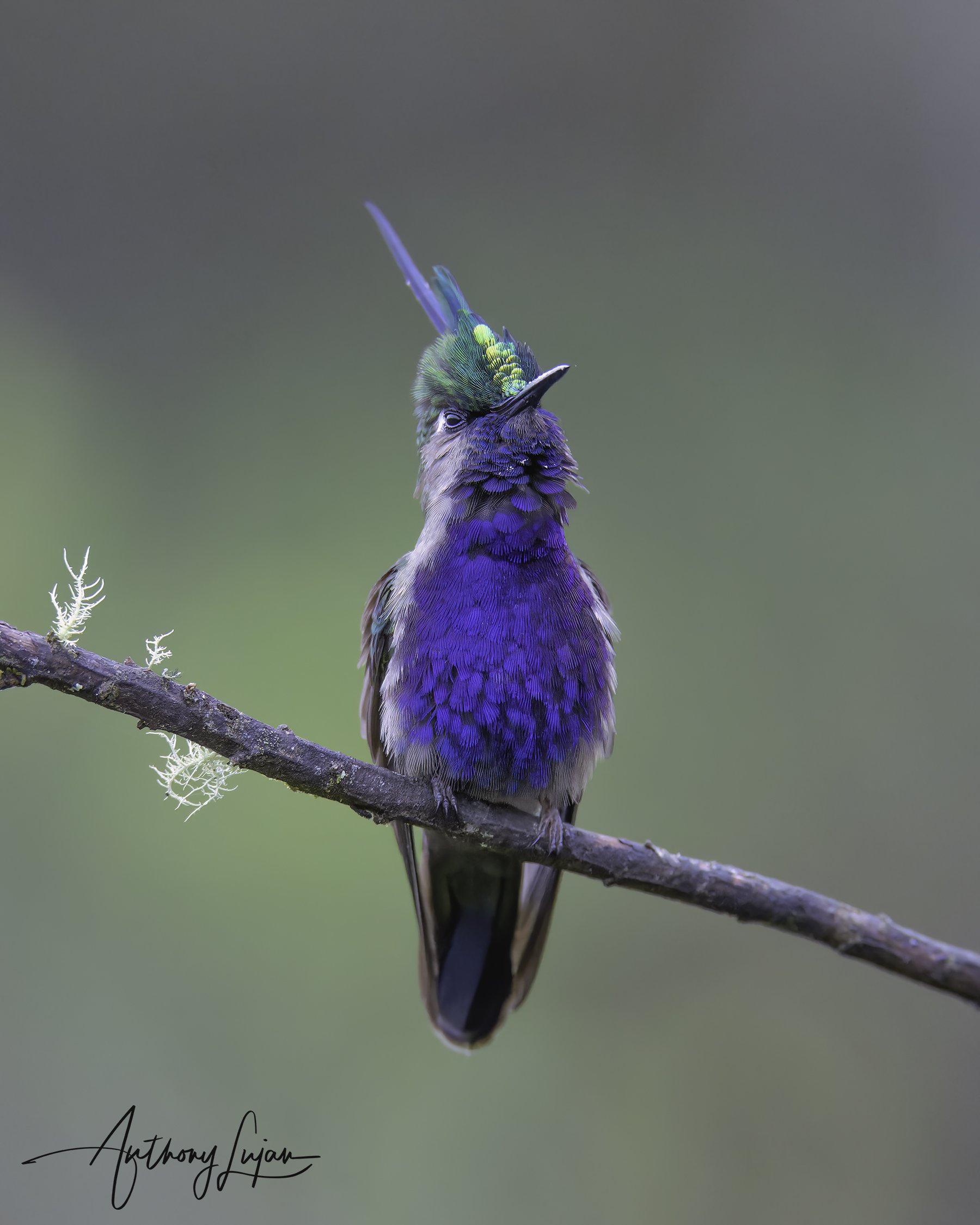How I Photographed the Green-crowned Plovercrest
Sony A1, Sony 600mm
f/8, 1/320, ISO 5000
If you had told me before my trip that I’d fall head over heels for the Green-crowned Plovercrest (Stephanoxis lalandi), I would’ve laughed it off. But that’s exactly what happened, and I’m here to tell you how this dazzling hummingbird stole my heart.
Sergio Gregorio
My journey to Brazil in 2022 was filled with anticipation, as it was my first time exploring this part of the world. To ensure I made the most of the trip, I teamed up with Sergio an exceptional photographer whose work I’d admired for years. I knew I was in good hands.
Given that this was my first trip to Brazil, my target list of species was broad—practically everything was new to me! I set an ambitious goal of photographing 26 different species, and to my delight, I managed to capture 24. Among the many incredible hummingbirds I encountered, the Green-crowned Plovercrest stood out as a true showstopper.
Discovering the Green-crowned Plovercrest
This stunning species is endemic to southeastern Brazil, making it a rare gem for birdwatchers and photographers alike. I had seen some of Sergio’s breathtaking photos of the Green-crowned Plovercrest and was in awe. I remember telling him that I’d be thrilled to capture even a fraction of the beauty he had.
We set out for the state of Minas Gerais, specifically Parque Nacional do Itatiaia at Brejo da Lapa, where this hummingbird at that time could be found. Thanks to Sergio’s meticulous planning and constant communication with local guides, we were well-prepared for the adventure. But nothing could have prepared me for what was about to unfold.
A Magical Encounter at the Lek
As we arrived at our destination, I couldn’t shake the feeling that something extraordinary was about to happen. It was as if the hummingbird gods were smiling down on us, ensuring that everything—from the weather to the birds themselves—was perfect.
Sergio didn’t tell me we were approaching a lek—a gathering place where male hummingbirds sing and display their dazzling plumage in hopes of attracting a mate. I couldn’t believe it, as this was one of the best leks I have ever been to!
We slipped on our plastic mud boots and made our way through the stunted trees of this high-elevation habitat called elfyn forest. The air was filled with the sounds of chirping, and soon enough, we spotted a Green-crowned Plovercrest. We tried to set up our gear, but the dense branches made it tricky.
That’s when Duco (above in the video), another person on our team, mentioned a clearing where several males were out in the open, singing and moving about. The video above. I don’t think anyone has seen a fat boy run so fast, especially not through mud! But when we reached the clearing, it was worth every step. There they were—several males, each perched and performing their unique song. If I close my eyes, I can still visualize precisely where each one was and how they sounded. Lucky for you I have videos to share.
Sony A1, Sony 600mm
f/4, 1/1600, ISO 4000
The Perfect Shot
Standing in the marshy mud, sinking a little deeper, I couldn’t have cared less. I quickly set up my tripod, trying to keep low and get as close to eye level with these incredible hummingbirds as possible. I focused on one individual that completely captivated me. With Sergio’s help, he adjusted the background, and the weather couldn’t have been more perfect. The Green-crowned Plovercrest was performing a mesmerizing display right before my eyes.
Sony A1, Sony 600mm
f/5.6, 1/800, ISO 5000
Sony A1, Sony 600mm
f/5.6, 1/800, ISO 5000
Seeing this bird in person is an experience like no other. Its stunning blueish-purple coloration, with that iconic green crest, is simply jaw-dropping. However, photographing it was no easy task. The lightest green at the front of the crest is prone to overexposure, while the blueish-purple chest requires careful attention to ensure the colors and details pop. Then there are the gray flanks to consider, which need just the right amount of exposure. And let’s not forget the crest itself—if the background is too busy or if the depth of field is too shallow, it can easily get lost in the shot. Some of my photos were taken at f/4, which was just on the edge of losing that beautiful long crest.
A Newfound Love
Photographing the Green-crowned Plovercrest was an absolute joy. There was something about this species that exuded personality, making the experience even more special. Maybe it was the lek, maybe it was the perfect day, or the group of people who were experiencing this moment with me, or maybe it was just the magic of Brazil—but this encounter easily ranks among my top moments in my hummingbird photography.
Sony A1, Sony 600mm
f/5, 1/1250, ISO 4000
By the end of the trip, I realized that my love for the Green-crowned Plovercrest wasn’t just about its stunning appearance. It was about the whole experience—the thrill of discovery, the joy of capturing something so beautiful, and the connection I felt with them and nature. This trip was more than just ticking off species on a list; it was about falling in love with the wild beauty of Brazil, one bird at a time.
Sony A1, Sony 600mm
f/5.6, 1/1250, ISO 8000
Once I returned, I had to make an enamel pin from this species. A few are still available at my online store, which is linked below.
Also visit the species page on my website to learn more!
Please note: The content provided here reflects Anthony’s personal experience as a dedicated photographer and details the specific methods he has utilized to successfully photograph this particular hummingbird species. It is important to understand that many complex factors are at play in the world of photography, and therefore not everyone may have the same experiences or outcomes as Anthony. Individual circumstances, varying levels of expertise, camera gear, and distinct approaches can all significantly influence the final results.



